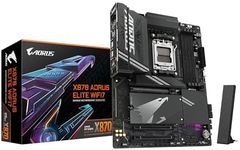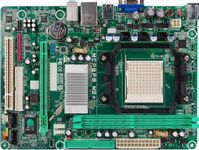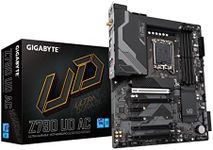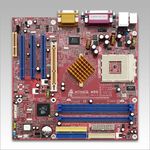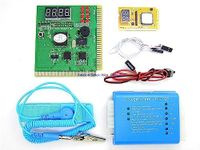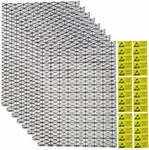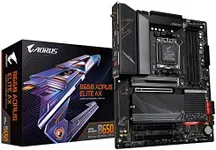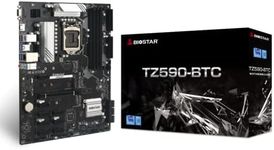Buying Guide for the Best Motherboards
Choosing the right motherboard is crucial for building a computer that meets your needs. The motherboard is the main circuit board that connects all the components of your computer, so it needs to be compatible with your other hardware and support the features you want. When selecting a motherboard, consider the type of processor you plan to use, the amount of memory you need, and the expansion options for future upgrades. Here are some key specifications to consider when choosing a motherboard.Form FactorThe form factor of a motherboard refers to its size and shape, which determines the type of case it will fit into. Common form factors include ATX, Micro-ATX, and Mini-ITX. ATX motherboards are larger and offer more expansion slots, making them suitable for high-performance builds. Micro-ATX boards are smaller but still provide a good balance of features and expandability. Mini-ITX boards are the smallest and are ideal for compact builds where space is limited. Choose a form factor based on the size of your case and your need for expansion slots.
Socket TypeThe socket type of a motherboard determines which processors it can support. Common socket types include LGA, AM4, and TR4. LGA sockets are used by Intel processors, while AM4 and TR4 sockets are used by AMD processors. It's important to choose a motherboard with a socket type that matches your processor. If you're planning to upgrade your processor in the future, make sure the socket type will support newer models.
ChipsetThe chipset is a crucial component that determines the motherboard's capabilities and features. It controls communication between the processor, memory, and other peripherals. Different chipsets offer varying levels of performance, connectivity, and features. For example, high-end chipsets provide better overclocking support and more USB ports, while budget chipsets may have fewer features. Choose a chipset based on your performance needs and the features you require, such as overclocking, multiple graphics card support, or advanced connectivity options.
RAM SlotsRAM slots on a motherboard determine how much memory you can install and the type of RAM it supports. Most motherboards have two to four RAM slots, with high-end models offering up to eight. The type of RAM supported is also important, with DDR4 being the most common. More RAM slots allow for greater memory capacity, which is beneficial for tasks like gaming, video editing, and multitasking. Choose a motherboard with enough RAM slots to meet your current and future memory needs.
Expansion SlotsExpansion slots allow you to add additional components to your motherboard, such as graphics cards, sound cards, and network cards. Common types of expansion slots include PCIe x16, PCIe x1, and M.2. PCIe x16 slots are used for graphics cards, while PCIe x1 slots are used for smaller cards like network adapters. M.2 slots are used for high-speed storage devices. Consider the number and type of expansion slots you need based on the components you plan to install and any future upgrades.
Storage OptionsStorage options on a motherboard include the types and number of connections available for hard drives and SSDs. Common storage connections include SATA and M.2. SATA ports are used for traditional hard drives and SSDs, while M.2 slots are used for high-speed NVMe SSDs. Having multiple storage options allows for greater flexibility and performance. Choose a motherboard with enough storage connections to meet your current and future storage needs.
ConnectivityConnectivity options on a motherboard include USB ports, Ethernet ports, and audio jacks. The number and type of USB ports are important for connecting peripherals like keyboards, mice, and external drives. Ethernet ports provide wired network connectivity, while audio jacks allow for sound output. Some motherboards also offer Wi-Fi and Bluetooth connectivity. Choose a motherboard with the connectivity options that match your needs for peripherals, networking, and audio.
BIOS/UEFIThe BIOS (Basic Input/Output System) or UEFI (Unified Extensible Firmware Interface) is the software that initializes and manages the hardware components of your computer. UEFI is the newer and more advanced version, offering a graphical interface and more features. The BIOS/UEFI allows you to configure settings like boot order, overclocking, and hardware monitoring. Choose a motherboard with a user-friendly BIOS/UEFI that offers the features you need for system configuration and optimization.


